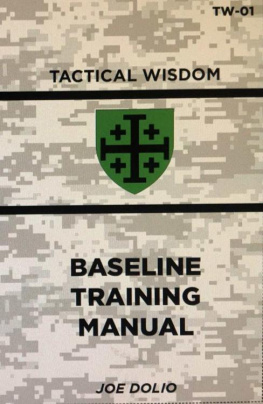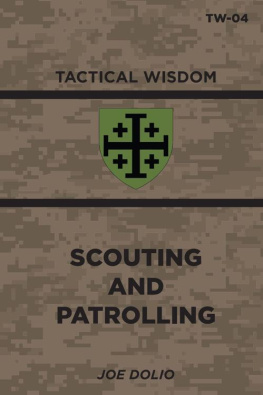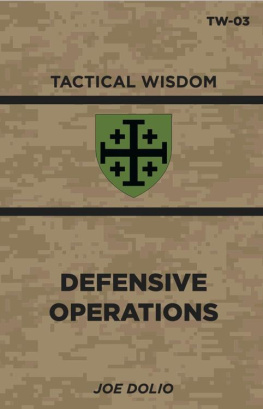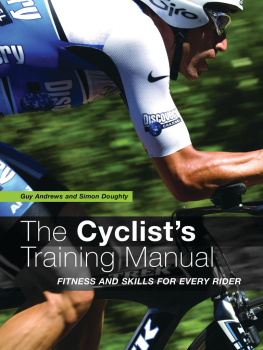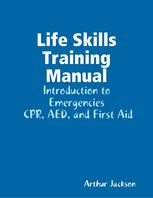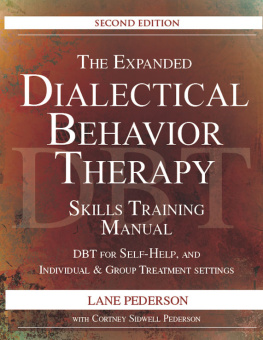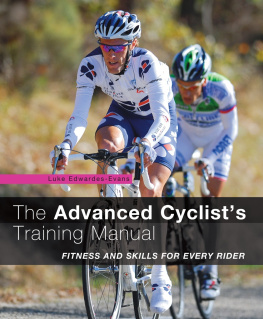TACTICAL WISDOM
FIELDCRAFT
TW-02
Tactical Wisdom
www.tactical-wisdom.com
COPYRIGHT 2021 Joseph W Dolio
All Rights Reserved
ISBN-13: 9798527464382
Cover Art: Andrew Dolio
FIELDCRAFT
TACTICAL WISDOM SERIES
TW-02
JOE DOLIO
Preface
Neither I nor my brothers, nor my men, nor the guards with me
Took off our clothes; each had his weapon,
Even when he went for water.
Nehemiah 4:23
As we consider what a Without Rule of Law situation will look like, we need to understand that Nehemiahs advice from a few thousand years ago is still pretty solid. In the quote above, hes saying that he and his men were always ready for hostile contact, even when sleeping or getting water. Thats solid advice.
Its easy to decide to buy some extra food, a couple gallons of water, and a whole bunch of expensive, ultra-cool-guy tacti-cool gear, and consider ourselves prepared. What you need more than that gear, though, is SKILLS. You cant carry all that stuff anyway. You cant lose skills and they never run out of batteries.
This book will bring you a set of skills that will be needed. Those skills are the ability to move and live in a hostile environment, using movement and security skills to stay safe in a WROL situation.
What will a WROL world look like?
First, we need to understand that there will not be police or fire/rescue personnel just awaiting your call. Many think that this is an outrageous claim to make, but is it?
We are already seeing that due to protests and rioting, law enforcement and fire services are stopped for most of the city in some areas, like Portland, Seattle, or Minneapolis. When things fall apart, these services, particularly law enforcement, will pull back and secure government facilities or critical infrastructure like hospitals.
In early 2021, we saw rioting in Brooklyn Center, Minnesota. There was widespread looting and crime. The police response was to drive around with their sirens on, in hopes of scaring off looters. Thats the entirety of their response. What do you think the response would be if the looting was nationwide?
Many think thats a far-fetched idea. We actually had it in the first few weeks after the George Floyd incident. Its not at all unrealistic.
I frequently point out the examples of the Ukraine and Georgia. Those are directly relevant. Both faced a WROL situation and most of those areas are still that way today.
In Georgia, despite the large-scale fighting being over within 10 days, vast parts of the nation are still occupied by either Russian troops or ethnic Russian militias today. What do you imagine life is like for an ethnic Georgian, being hunted and harassed by militias and foreign troops daily for years? Thats where fieldcraft comes in.
The Ukrainian revolution was over in 72 hours, and all fighting was contained in the Capitol region. People in the rest of the country went about their daily lives with no real worry, because it was just those kids protesting again. Right up until they woke up one morning with a new government ran by extremists.
Militias sprang up immediately to fight the new government and amid that chaos, the Russians invaded. Now, there are at least 4 different major armed parties fighting over the eastern half of the country, and dozens of armed criminal groups taking advantage of the chaos. People are daily out searching for food & water, while dodging patrols & checkpoints from every side.
Having the skills to move safely, live in the field securely, and provide for your own protection are vital in these areas. Thats where fieldcraft comes in.
Here, we face the potential for a Balkanization, or a breakup of the United States into various regions along racial, ethnic, and socio-economic lines. We face daily the threat of a breakdown of law and order.
This book is meant to assist in learning basic fieldcraft skills to enable prepared people to move and live in a hostile environment in the most secure way possible.
Veterans will recognize a lot of basic techniques they learned in training, but there are additional things in here from other places as well. This book is not just a re-hash of Combat Skills of the Soldier or Warrior Skills, although those topics are covered. We will cover a lot of techniques taught by Western militaries, some by private military contractors, and some that are just general woodcraft skills.
The book is designed to provide a basic to intermediate level of fieldcraft knowledge to both the untrained and the veteran, and it will serve as a great training resource for your preparedness group. Its also a great refresher for anyone else.
Its worth noting that difference between a high-speed special operations soldier and a basic infantryman is mastery of the basics. Its the exact same with martial arts. The more you work on the most basic of skills, the better you become overall. A Marine Scout-Sniper doesnt learn secret fieldcraft skills, he becomes an expert at a very select few of the most basic, by repetition.
Get out and practice the skills in this manual, both individually and as a team.
Table of Contents
Tactical Wisdom
Fieldcraft
Chapter 1
Fieldcraft & WROL
Go out into the hill country & bring back branches
From olive & wild olive trees, and from
Myrtles, palms, & shade trees to make temporary shelters.
Nehemiah 8:15
Fieldcraft is defined as the techniques involved in living, traveling, and observing, from a tactical standpoint, in the field.
As I read a lot of preparedness and survival books along my own journey, I noticed that there were not many books that discussed these skills. This is probably because most people who first wrote about preparedness assumed that their readers were all former military or just somehow had that knowledge.
The problem is that even among trained personnel, terminology and techniques vary. No disrespect to my Air Force cousins, but the individual movement techniques taught by a force that operates in a rear area are not necessarily the same as those taught by forward-deployed forces.
We also see differences based on various nations forces. For example, what we in the US military call a high crawl, our Canadian cousins call a Leopard Crawl.
The solution then is to develop a single, unified set of terminology and techniques that your preparedness group can all agree on and all train together on. Thats where this manual comes in.
From a training perspective, whenever groups get together to train, everyone wants to go directly to tactics, rather than individual movement. Tactical team movement is made up entirely of basic individual movements and fieldcraft, unified to arrive at a goal.
We see the same thing in Martial Arts training everyone wants to learn some new, advanced form, or self-defense technique, yet once a month when we train with Grand Master Drouillard (the first American to receive a black belt in Tang Soo Do), he makes us spend the first few hours on the basic white and yellow belt techniques, because thats the foundation for everything else. You cant become an ultra-high-speed cool-guy in all your tacti-cool gear unless you have a solid foundation in fieldcraft.
Your hundreds of hours of range time and tens of thousands of rounds fired at targets are absolutely worthless if you get shot by a bad guy from 450 meters away, because you had no fieldcraft skills.
Another important note is that if your team comes from a varied background, and you dont standardize these techniques, there is a risk of endangering your own people. If you assume that someone knows the proper way to negotiate a fence, they can put your team at risk by climbing over it upright, rather than sliding under it, or cutting the bottom strand. The same goes for observation skills.


